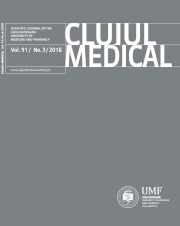Fecal transplantation: digestive and extradigestive clinical applications
DOI:
https://doi.org/10.15386/cjmed-946Keywords:
fecal transplantation, IBS, IBD, intestinal diseasesAbstract
Background and aim. Fecal transplantation or fecal material transplantation (FMT) became a hot topic in gastroenterology in recent years. Therefore it is important to disseminate the up-to-date information on FMT. The aim of the paper is to review the knowledge on FMT and its clinical applications.
Methods. An extensive review of the literature was carried out. Titles from Pubmed were searched and analyzed. A narrative review has been written with emphasis on indications of FMT in different conditions.
Results. The guidelines recommend FMT in relapsing infection with Clostridium difficile. Several attempts to use FMT in other conditions have been analyzed. Attempts were recorded in other bowel disorders like IBD, IBS, chronic constipation and even colorectal cancer. The attempt to change the microbiota by FMT in diabetes and obesity represent challenges for the future.
Conclusions. Fecal transplantation represents an important therapeutic method, intensively investigated these years. Beside the indication for persistent and recurrent Clostridium difficile infection, several attempts were undertaken in other intestinal diseases and in metabolic conditions. The efficiency of these applications has to be demonstrated.
Downloads
Published
How to Cite
Issue
Section
License
The authors are required to transfer the copyright of the published paper to the journal. This is done by agreeing to sign the Copyright Assignment Form. Whenever the case, authors are also required to send permissions to reproduce material (such as illustrations) from the copyright holder.

The papers published in the journal are licensed under a Creative Commons Attribution-NonCommercial-NoDerivatives 4.0 International License.

